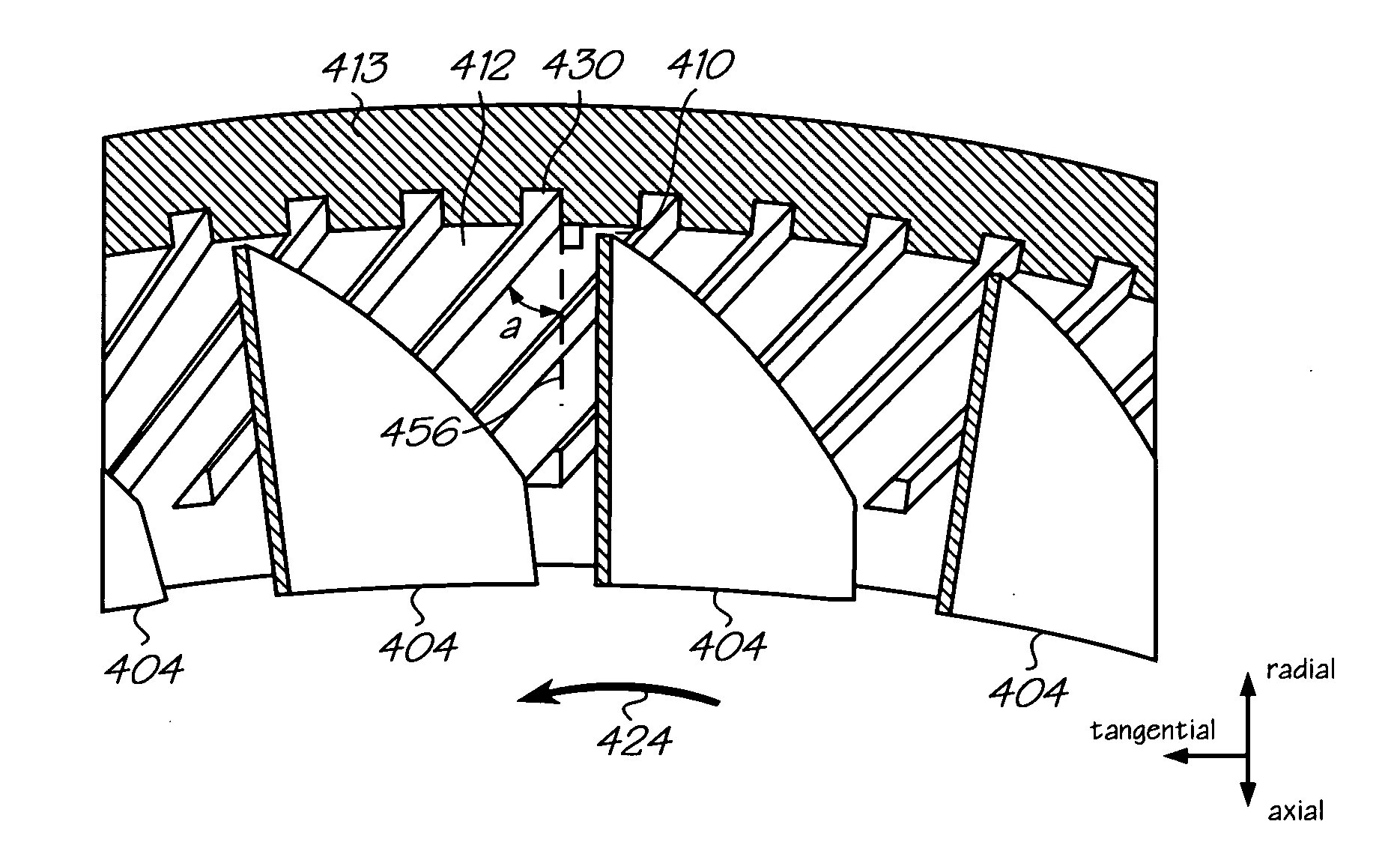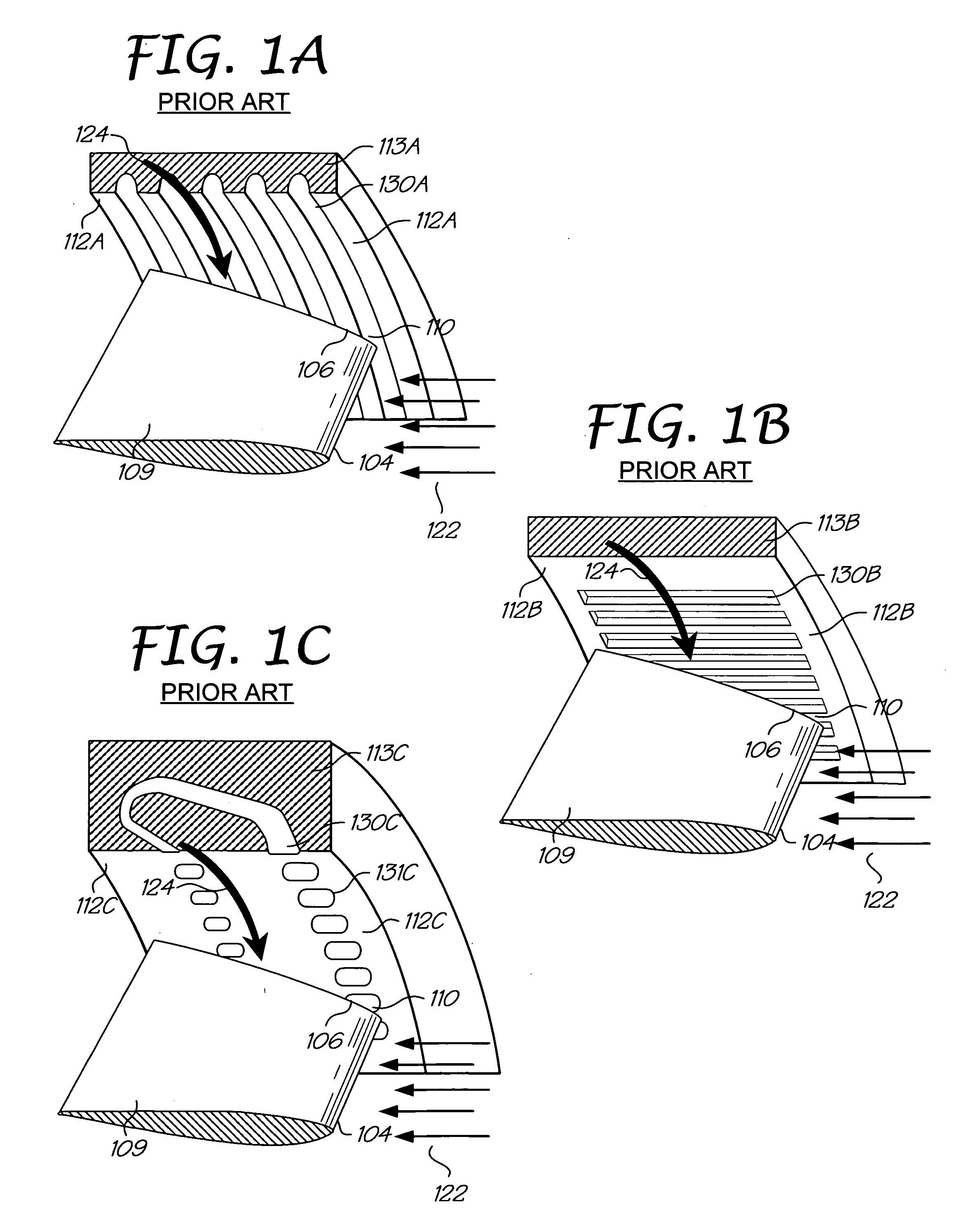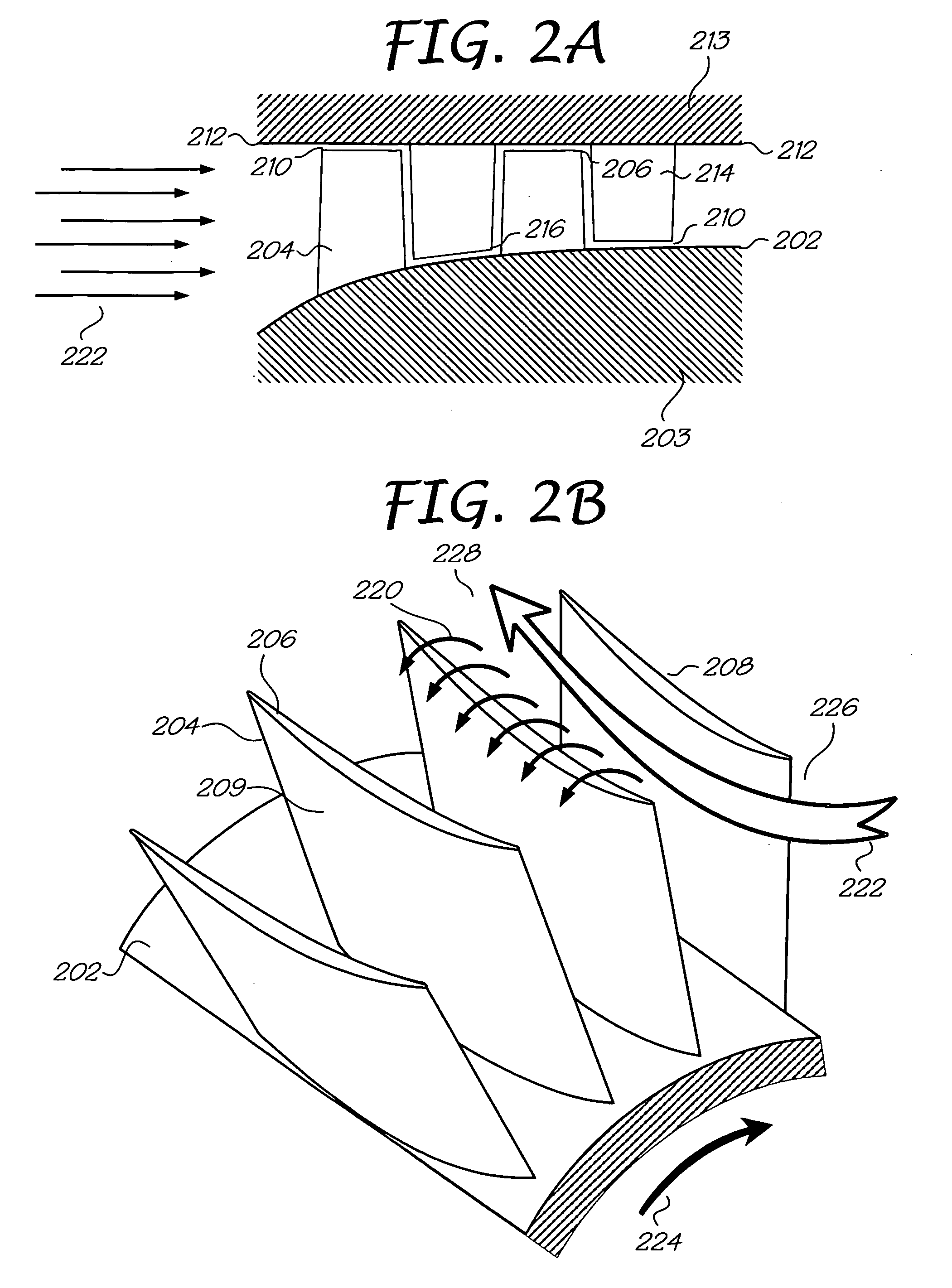Turbomachine with reduced leakage penalties in pressure change and efficiency
a turbine and valve technology, applied in the field of turbines, can solve the problems of reducing efficiency, reducing the effective flow area, and reducing the clearance across substantially all blade tips, so as to reduce the adverse effects of tip leakage and reduce the flow recirculation within the groov
- Summary
- Abstract
- Description
- Claims
- Application Information
AI Technical Summary
Benefits of technology
Problems solved by technology
Method used
Image
Examples
Embodiment Construction
Element Reference Number Designations
[0031]02: Hub surface[0032]03: Hub body[0033]04: Blade-rotating hub-mounted blade[0034]06: Tip of rotating blade[0035]08: Blade surface facing rotation direction[0036]09: Blade surface facing opposite rotation direction[0037]10: Gap (clearance) between tip of rotating hub-mounted blade[0038]12: Casing wall[0039]13: Casing body[0040]14: Vane (blade)—stationary casing mounted[0041]16: Tip of stationary vane[0042]18: Forward facing surface of stationary vane[0043]19: Aft facing surface of stationary vane[0044]20: Leakage flow over blade tip from high pressure side (pressure surface) to low pressure side (suction[0045]22: Direction of incoming flow[0046]24: Rotation direction[0047]26: Upstream limit of blade[0048]28: Downstream limit of blade[0049]30: Groove in stationary casing wall[0050]31: Groove start[0051]32: Groove peak[0052]33: Groove end[0053]40: Groove in rotating hub surface[0054]50: Normal to blade[0055]52: Chord line of airfoil[0056]54: C...
PUM
 Login to View More
Login to View More Abstract
Description
Claims
Application Information
 Login to View More
Login to View More - R&D
- Intellectual Property
- Life Sciences
- Materials
- Tech Scout
- Unparalleled Data Quality
- Higher Quality Content
- 60% Fewer Hallucinations
Browse by: Latest US Patents, China's latest patents, Technical Efficacy Thesaurus, Application Domain, Technology Topic, Popular Technical Reports.
© 2025 PatSnap. All rights reserved.Legal|Privacy policy|Modern Slavery Act Transparency Statement|Sitemap|About US| Contact US: help@patsnap.com



